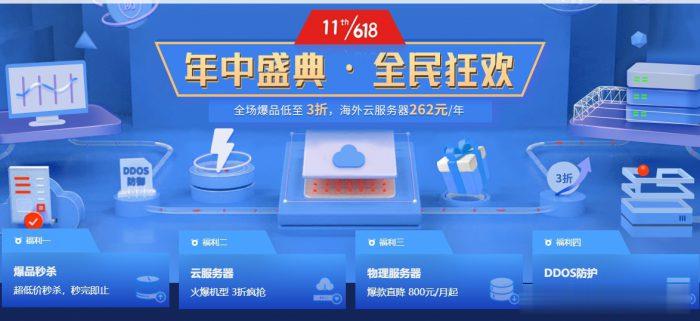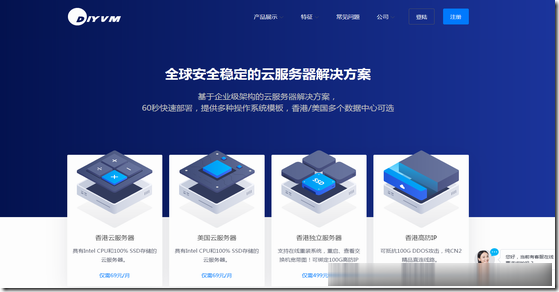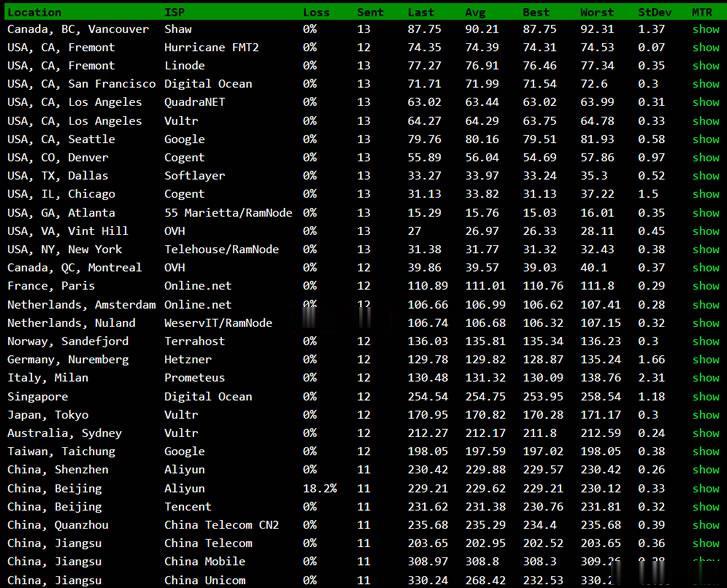basedresearch1.About NWT CIMP
NWT CIMP
Traditional
Knowledge
Proposal Guide
For2017-2018Funding
October2016
Northwest Territories Cumulative Impact Monitoring Program
Table of Contents
1. About NWT CIMP..........................................................................................................3
1 1 NWTCIMPOBJECTIVES 31 2 TRADITIONALKNOWLEDGEPRIORITIES 31 3 AVAILABLEFUNDING 414 KEYDATESFOR2017/18PROPOSALS 51 5 NWTCIMPCONTACT 5
2. Eligible Recipients and Costs................................................................................6
21 ELIGIBLERECIPIENTS 622 ELIGIBLECOSTS 623 DISTRIBUTIONOFFUNDS 7
3. Applicant Responsibil ities.........................................................................................8
31 COMMUNITYSUPPORTANDENGAGEMENT 832 COMMUNITYCAPACITYBUILDING 833 REPORTING RESULTS 934 RELEVANCETODECISIONMAKERS 1035 HUMANHEALTH 10
4. Requestfor Proposal Process................................................................................11
41 LETTERSOF INTENT 1 142 FULLPROPOSALS 1 143 HOWPROPOSALSAREEVALUATED 1244 HOWANNUALREPORTSAREEVALUATED 1545 PROJECTPROPOSALAND REPORTINGPROCESSATAGLANCE 17Appendix A:Pathways Approach..................................................................................19
Appendix B:Key NWT Decision-Makers.....................................................................21
Appendix C:TK Letterof IntentSubmission Form...................................................23
Appendix D:Full Proposal Submission Form............................................................27
Appendix E:NWT CIMP Traditional Knowledge Data-Sharing Agreement
Template...............................................................................................................................33
Appendix F:Annual ReportTemplate..........................................................................43
Appendix G:Final ReportTemplate..............................................................................48
NWTCIMPTraditionalKnowledgeProposalGuide October2016 p i i
1. About NWTCIMP
The NorthwestTerritories Cumulative Impact Monitoring Program(NWT CIMP) is a source ofenvironmental monitoring and research in the NorthwestTerritories (NWT).NWT CIMP coordinates,conducts and funds the collection,analysis and reporting of information related to environmentalconditions,particularly cumulative impacts and environmental trends, in the NWT. Its goal is to produceinformation thatsupports better resource management decision-making and sustainabledevelopment.All sources of knowledge are considered, including Traditional Knowledge(TK).The useand fu’ ll consideration of TKfor cumulative impactmonitoringalso supports the Governmentof theNWT s (GNWT)Traditional Knowledge Policy by producingTK that can be incorporated into governmentdecisions and actions where appropriate.
Since 1999,NWT CIMP has been guided by a Steering Committee of FirstNations, Inuvialuit,Métis,federal and territorial government representatives.The program is administered by the D epartment ofEnvironment and Natural Resources,Government of the Northwest Territories (GNWT).This Guideoutlines how applicants can apply for funding forTK focused projects through the annual RequestforProposals (RFP)process.A Scientific Proposal Guide is also available for scientific focused projects.
1.1 NWTCIMPOBJECTIVES
The NWT CIMPvision is:To watch and understand the landso thatitcan be used respectfullyforever.Watching implies basic research and monitoring,while understanding suggest“s the addition of value tobasic in”formation through analysis and the generation of knowledge.The idea using the land respectfullyforever reminds us that thatthe knowledge generated through NWT CIMP is intended to informregulatory decisions thatwill support the sustainable use of NWT resources.
NWT CIMP supports research and monitoring using science and/or traditional knowledge(TK) thataddresses:
1. Cumulative impacts of human activities and natural disturbances on the environment;
2. Environmental trends, their potential causes,and significance;and
3. Baseline environmental conditions.
1.2 TRADITIONALKNOWLEDGE PRIORITIES
NWT CIMP views the increased use of Traditional Knowledge(TK) in environmental research andmonitoring as a high priority.TK projects should be mutually beneficial to NWT CIMP,northerncommunities and the NWT by generating knowledge that is complementary to existing and ongoingresearch,as well as to other TK studies,to gain regional and territorial TK perspectives.TK projectsshould deliver cumulative impactmonitoring and/or environmental trend information that can bedemonstrably incorporated into land and water-use decision-making. In keepingwith the holistic natureof TK,the general research focus of any individual TK projectshould be on the biophysical environmentrelatedto caribou, fish or water,butthe specific focus examined is atthe discretion of the community.This is in contrast to scientific NWT CIMP projects,which are required to address specific components ofthe environment to be eligible for funding.Projects thatinclude both types of knowledge are required toaddress scientific research and monitoringpriorities in the NWT CIMP Blueprints (see theNWT CIMPScientific Proposal Guide,Appendices D,E,and F) to be eligible for funding.For example,NWT CIMP isNWT CIMP Scientific Proposal Guide October2016 p.3
particularly interested in the collection and analysis of TK to complementthe scientific analysis of waterquality and quantity trends,as recommended in the 2015 NWT Environmental Audit.
NWT CIMP’s vision forTKmonitoring and research is to improve ourunderstandingof cumulativeenvironmental impacts and to reincorporate northern elders into decision-making processes through theuse of TK.Duringthe documentation and compilation of TK,projects should actively facilitate thetransfer of this knowledge to youth through their continual engagement.This will aid in the preservation,safeguarding and promotion of TK to future generations.
NWT CIMP recommends thatall TKprojects be consistentwith existing policy and guidelines onTKsharingand/or research developed or adopted by the community orthe region.NWT CIMP is aware ofthe followingcommunity,regional and institutional policy and guidelines on TK or community-basedresearch and sharing of information:
In2u0v0i0aluit Regional Corporation Guidelines for Research in the Inuvialuit Settlement Region
( )
SKambal adK'e D2e0n0e3Band Policy Regarding the Gathering,Use and Distribution of Traditionalnow e ge( )
Deh Cho First Nation'Traditional Knowl edge Research Proto'col (2004)
Workingwith Gwich in Traditional Knowledge in the Gwich in Settlement Region(2004)
Guidelines for incorporatingTK in Environmental Impact Assessment(July 2005)
Akaitcho D ene First Nations Akaitcho Exploration Agreement(2008)
North Slave Metis Alliance Community Engagement Policy(2009)
Government of the Northwest Territories Traditional Knowledge Best Practices Summary(2010)
Aurora Research Institute:Guide to Research in the Northwest Territories (2011)
Northwest Territory Métis Nation Traditional Knowledge Policy(2012)
Mackenzie Valley Land and Water Board Engagement and Consultation Policy(2013)
NWT CIMP WorkingTogether Towards Relevant Environmental Monitoring and Research in the
NWT(2013)
NWT CIMP requires a TK Sharing Agreement for all TKprojects thatitfunds (Appendix E).The purposeof the sharing agreementis to ensure there is a clear understandingof howTKwill be used, stored andshared between the NWT CIMP,researchers,organizations and the community(s).
1.3 AVAILABLEFUNDING
One way that NWT CIMP supports research and monitoring of cumulative impacts and environmentaltrendsin the NWT is by providingfundingto partners through an annualRequestfor Proposal (RFP)process.NWT CIMP will consider both single-year and multi-year proposals.Long-term monitoringprojects are encouraged,but will be reviewed and approved in 3-year increments.Generally long-termmonitoring projects begin with a larger funding amount and then taper to a smaller funding amountunless unexpected results or new questions are encountered.thatrequire more equipment, sampling,oranalysis.Approximately$600Kis available for funding new projects in 2017/18,encompassing bothscientific and TK projects.The maximum amount of funding considered per project is$60K peryear,though additional funding may be considered for larger collaborative projects. Smaller projects areeligible to apply.
NWT CIMP will notprovide supportfor research ormonitoringwhere itis clearlythe responsibility ofanother organization.For example,NWT CIMP will notprovide supportfor programs with secured,establishedfundingorsupportcollection of baseline datafor aspecific proposed oron-goingdevelopment. However,NWT CIMP may support baseline data collection when the data being collectedNWT CIMP Scientific Proposal Guide October2016 p.4
spans a greatergeographical area,or is beyond the scope of the baseline data required for a particularproponent.
1.4 KEY DATES FOR 2017/18PROPOSALS
Letter of Intent Issued:September 30th,2016
Letter of Intent Deadline:October 28th,2016(4:00pm MDT)
Call for Proposals Issued:December 1st,2016
Proposal Deadline: January 13th,2017(4:00pm MST)
Announcement of Project Funding:April 2017
1.5 NWTCIMPCONTACT
Letters of Intent can be sentby emailor regular mail to:
Attn:Do nnaMari e Ouellette
NWT Cumulative Impact Monitoring Program
Department of Environment and Natural Resources,GNWT
P.O.Box1320
Yellowknife NT X1A 2L9
Phone: (867) 767-9233 ext.53081
Emai l: nwtci mp@gov.nt.ca
Please note thatan email confirmingreceipt will be sent.
NWT CIMP Scientific Proposal Guide October2016 p.5
2. El igible Recipientsand Costs
2.1 ELIGIBLERECIPIENTS
The following groups/individuals are eligible for funding, including:
NWT communities or groups;
Aboriginal, federal and territorial governm ent departments and agencies;
Academic institutions;and
Non-governm ental organizatio ns.
For TK projects, the applicant(designated projectlead)mustbe a not-for-profitAboriginal or communityorganization or affiliated with one.As well,the project team must include active participants fromAbori ginal communities.
2.2 ELIGIBLECOSTS
Costs that are eligible underNWT CIMP fundingare outlinedbelow:
Professional Fees and Services
– Wages of people hired specifically forthe NWT CIMP-funded TKproject(i.e. employees;including students,Aboriginal and/or local employment).
Double countingof contracted employees should notoccur.This category should notinclude the salaries of full-time,continuous,or term employees participating in theproposed projectwho have not been hired specifically forthe project.However,anyapplicantfrom a not-for profit Aboriginal or community organization may requestasalary replacementstipend for employees participating in the proposed project to buyrelease time from duties to their organization.
Equipment and Facilities
– Equipment costs (purchase, lease and maintenance).
Only equipment thatis specificallypurchased, leased or developed for the particularproject can be funded.Note:The maintenance cost of equipment already owned by thegovernmentor other organization and used as partof the projectis considered in-kindsupport.
Travel
– Travel,accommodation and meals associated with the projectand reporting;
– The cost of establishing and operating field camps,vehicle and aircraft rental,gas purchaseand shipping(i.e. freight) charges.
Other Costs
– Miscellaneous costs, such as office supplies and operating expenses (e.g.,office space,rental,phone,printing,computer time, fax,photocopying and postage),hall rentals.
NWT CIMP Scientific Proposal Guide October2016 p.6
Administration Fee(excluding federal and territorial governments)
– Administrative expenses associated with the projectactivity(must not exceed 15%of thetotal project budget).
– The 15%administration fee also applies to organizations participating in the project thatreceive CIMP funding through the lead organization.
Copyright for publications(public)
– NWT CIMP encourages recipients to publish findings in openjournals. In cases wherethis isnotpossible,an additional amountcan be added to the project budget(no greater than
$5000).This gives the authorthe rights to distribute the paperwidely.
2.3 DISTRIBUTION OFFUNDS
Recipients may request that a portion of their fundingbe distributed to another organization involved inthe project.NWT CIMPwill determine if the requestcan be accommodated.The minimum amountthatNWT CIMP will distribute is $10,000.
Recipients will receive p’rojectfundingby entering into a Contribution Agreement(CA)with NWT CIMP.The GNWT policy on CA s is thatan initial paymentof 90%of the approved amountis paid atthebeginningof the fiscal year.The remaining 10%is released on receiptof a signed financial statementfrom the recipient.
NWT CIMP Scientific Proposal Guide October2016 p.7
3. Appl icant Responsibi l ities
Applicants should consider the followingto ensure a competitive proposal :
3.1 COMMUNITYSUPPORTAND ENGAGEMENT
Community engagement and supportfor the proposed monitoringprojectis an important element ofNWT CIMP-funded projects. Ideally,northern community members, local decisio’n makersand Aboriginalorganizations are involved in defining the purpose of the monitoring,the projects design and how itwillbe implemented.NWT CIMP supportis more likely when a projectwill build long-term capacity withinNWT communities orAboriginal organizations.Relevantletters of support from community, localdecision makersand/or regional organizations to show their supportor involvementin the projectstrengthen anapplication.
NWT CIMP has developed the Pathways Approachto describe a sharedapproach to research andmonitoring that involves NWT communities.Where appropriate,use of the Pathways Approach will helpapplicants design a better study in collaboration with communities and decision-makers.The PathwaysApproach also provides a good framework from which to develop monitoring and research projects.Formore detail,refer to Appendix A.
3.2 COMMUNITYCAPACITYBUILDING
NWT CIMP supports community capacity building and community-based monitoring.However,projectsmustprimarily generate scientific or TK information that furthers the understanding of cumulativeimpacts and environmental trends.Projects thatfocus solely on community capacity buildingwill notbefunded.
The ultimate goal of capacity buildingfunding is self-sustaining communities with community membersthathave the skills to fill availablejobs leading to better socio-economic outcomes.Capacity buildingfunding should increase the ability of community members to continue long-term monitoring andencourage youngpeople to build careers related to the environment.To those ends,NWT CIMP givespreference to formal,accredited, short-term training opportunities with a higher likelihood of generatingfuture employment opportunities.
Examples of capacity building and training activities that could be a component of a TKcumulative impactmonitoring project are:
Community involvementin monitoring/data collection thatwould help share knowledgewith community members;or
Hands-on trainingin the collection of TKthat would increasethe ability of communitymembers to continue long-term monitoring or encourage youngpeople to build careersrelated to TK and the environment.
Likewise,NWT CIMPwill notfund projects that are focused solely onthe archivingof TK.Whilethearchivingof TKis importantand may form a componentof the project,the primarily goal of the projectneeds to be the generation of new information or the analysis of existing information thatfurthers ourunderstanding of cumulative impacts and/or environmental trends.
NWT CIMP Scientific Proposal Guide October2016 p.8
3.3 REPORTING RESULTS
Reporting results is an important element of NWT CIMP-funded projects.Proposals must contain areporting and communications plan thatindicates how results will be delivered and conveyed to NWTCIMP, involved communities and decision-makers.
The mandatory reporting requirements are:
Final publications–Results from NWT CIM P-funded projects, including peer-reviewed reports,non-peer reviewed reports,posters,maps,and data mustbe submitted to NWT CIMP staff evenafterprojectfundingis complete. Itis the responsibility of the ProjectLeadto send publicationsto NWT CIMP.
Northern Meeting-Recipients of funding musttravel to a relevant northern meeting for thepresentation of their results within the fundingyear.These costs mustbe included in theproposal budget.When working in the communities,the recipientshould seek opportunities topresent findings.NWT CIM P hosts one regional results workshop each year,and a territorialresults workshop approximately every five years.The aim is to bring together researchers,NWTcommunity members and decision-makers to discuss current research results,priorities andcollaborations.Recipients are encouraged to participate in the workshop especially if the projectwork is takingplace in the region chosen forthatyear. Itis an opportunity for recipients topresent results and gather feedback on the project.Contact NWT CIM P to determine where aresults workshop will be held in the fundingyear.
Recipients can arrange their own northern meetingin an involved community or collaboratewith others to ensure a broad audience.Plain language presentations,handouts and posters aredesirable deliverables.Recipients of fundingare strongly encouraged to considerthe use oftranslation when reporting results back to communities.For example, in consultation withcommunities you may be asked to provide translated summaries of research,plain languageresults and/or provide a translator for community meetings with elders.
Data management plan–Recipients may be asked to submit a Data Management Plan beforethe transfer of funds can take place,the only exception to this would be those thatare solelycollectingTK data,they will be askedto submitaTK data-sharingagreement.This plan shoulddescribe how the data generated by the projectwill be managed and disseminated.The templatewill be sent to recipients on approval of proposals.Please note, thatin the event thattherecipientis collectingTK data,as well as other data, they may be asked to submit a DataManagement Plan and a TK Data sharing agreement.
TK Data sharing agreement (only mandatory if TK information is collected) –Recipients mustsubmitaTK Data sharingagreementbefore the transfer of funds can take place.The agreementshould clearly describe whatTK datawill be collected and how itwill be used, stored and sharedbetween parties.The template will be sent to successful recipients on approval of proposals.NWT CIMP Scientific Proposal Guide October2016 p.9
- basedresearch1.About NWT CIMP相关文档
- it1i6oNWT HANSARD Blues
- FloydNWT HANSARD Blues
- GasNWT HANSARD Blues
- icNWT HANSARD Blues
- PSUSBTLAICTESMEERNVTIC6E8NWT HANSARD Blues
- iativfeNWT HANSARD Blues - assembly.gov.nt.ca
2021年恒创科技618活动:香港/美国服务器/云服务器/高防全场3折抢购
2021年恒创科技618活动香港美国服务器/云服务器/高防全场3折抢购,老客户续费送时长,每日限量秒杀。云服务器每款限量抢购,香港美国独服/高防每款限量5台/天,香港节点是CN2线路还不错。福利一:爆品秒杀 超低价秒杀,秒完即止;福利二:云服务器 火爆机型 3折疯抢;福利三:物理服务器 爆款直降 800元/月起;福利四:DDOS防护 超强防御仅 1750元/月。点击进入:2021年恒创科技618活...

DiyVM:50元/月起-双核,2G内存,50G硬盘,香港/日本/洛杉矶机房
DiyVM是一家比较低调的国人主机商,成立于2009年,提供VPS主机和独立服务器租用等产品,其中VPS基于XEN(HVM)架构,数据中心包括香港沙田、美国洛杉矶和日本大阪等,CN2或者直连线路,支持异地备份与自定义镜像,可提供内网IP。本月商家最高提供5折优惠码,优惠后香港沙田CN2线路VPS最低2GB内存套餐每月仅50元起。香港(CN2)VPSCPU:2cores内存:2GB硬盘:50GB/R...

BuyVM新设立的迈阿密机房速度怎么样?简单的测评速度性能
BuyVM商家算是一家比较老牌的海外主机商,公司设立在加拿大,曾经是低价便宜VPS主机的代表,目前为止有提供纽约、拉斯维加斯、卢森堡机房,以及新增加的美国迈阿密机房。如果我们有需要选择BuyVM商家的机器需要注意的是注册信息的时候一定要规范,否则很容易出现欺诈订单,甚至你开通后都有可能被禁止账户,也是这个原因,曾经被很多人吐槽的。这里我们简单的对于BuyVM商家新增加的迈阿密机房进行简单的测评。如...

-
交换机routehttp://www.tutorialspoint.com/css/css_dimension.htmfunctionscss模块ios8支持ipadipad如何上网如何用手机流量在IPAD上上网windows键是哪个windows 快捷键 大全127.0.0.1127.0.0.1打不开canvas2html5创建两个canvas后,怎么回到第一个canvasgoogle中国地图怎样用GOOLE搜中国地图用卫星看的那一种(可以看到城市和房子的)